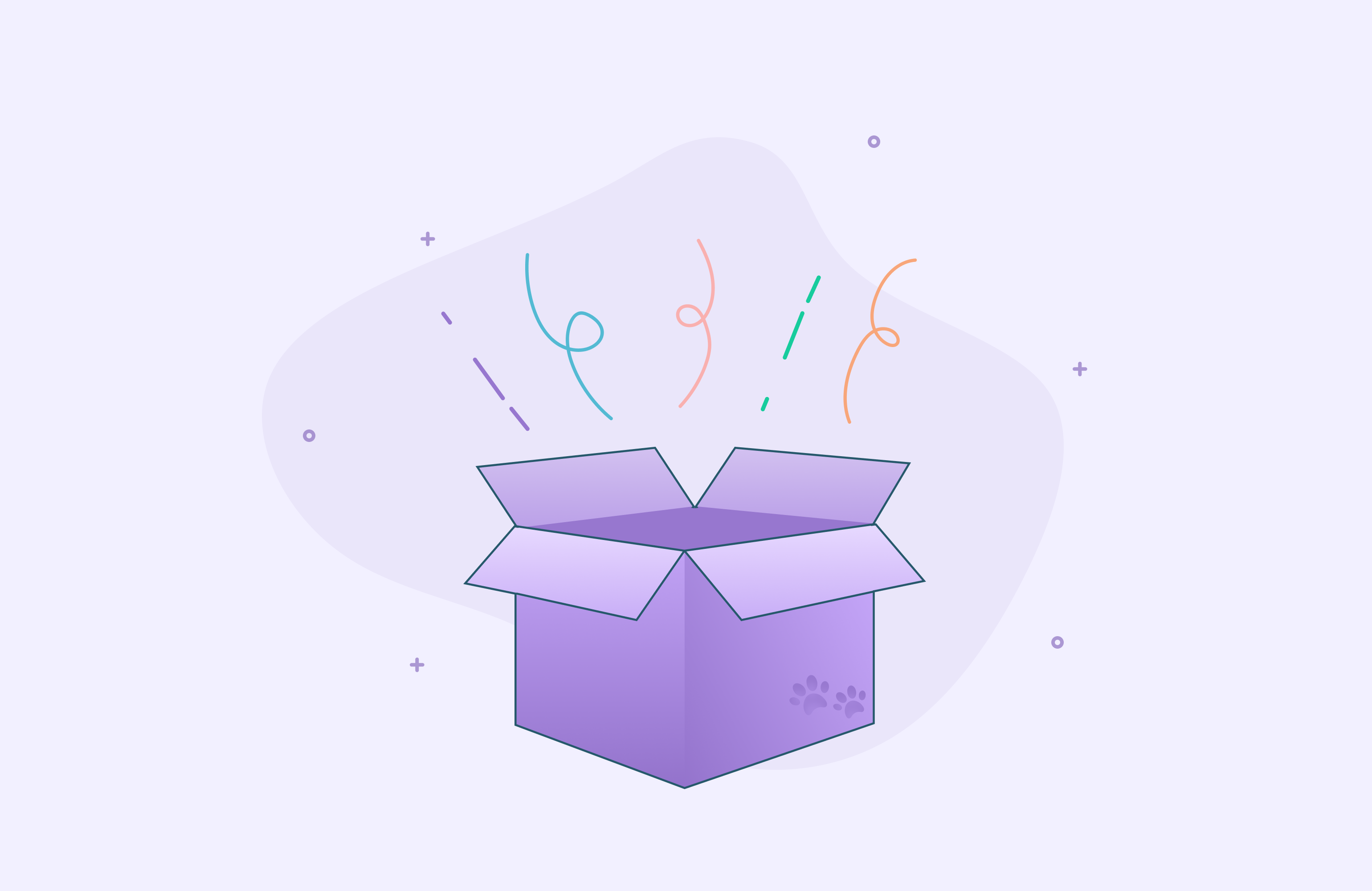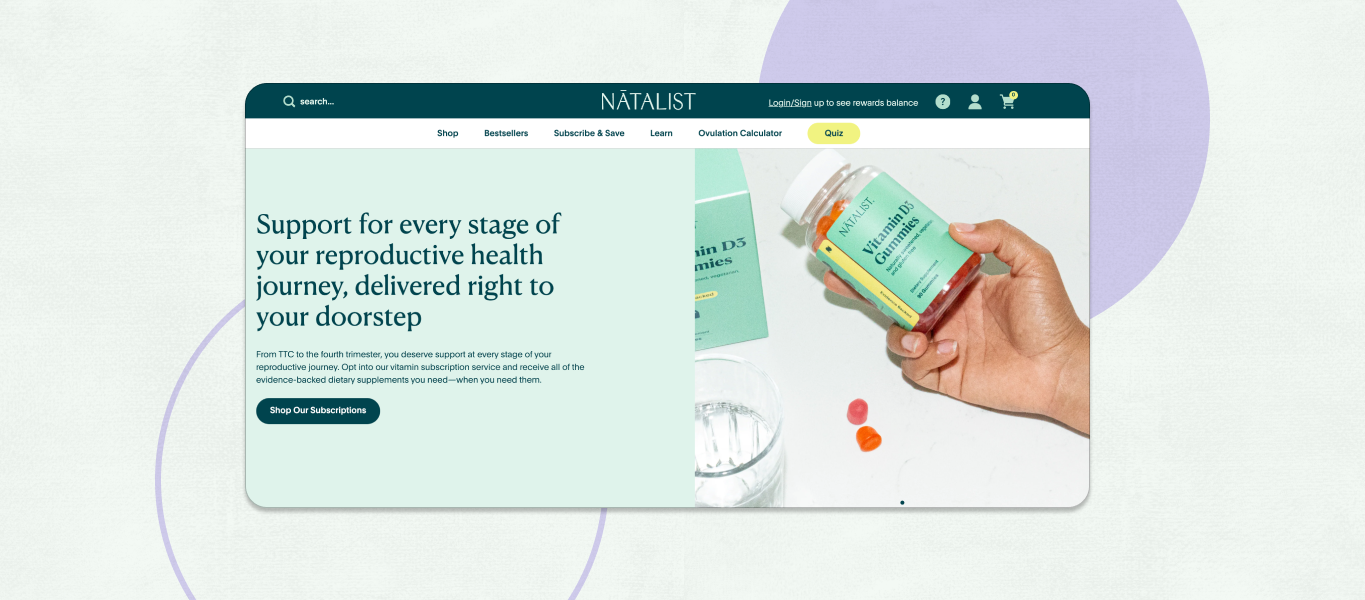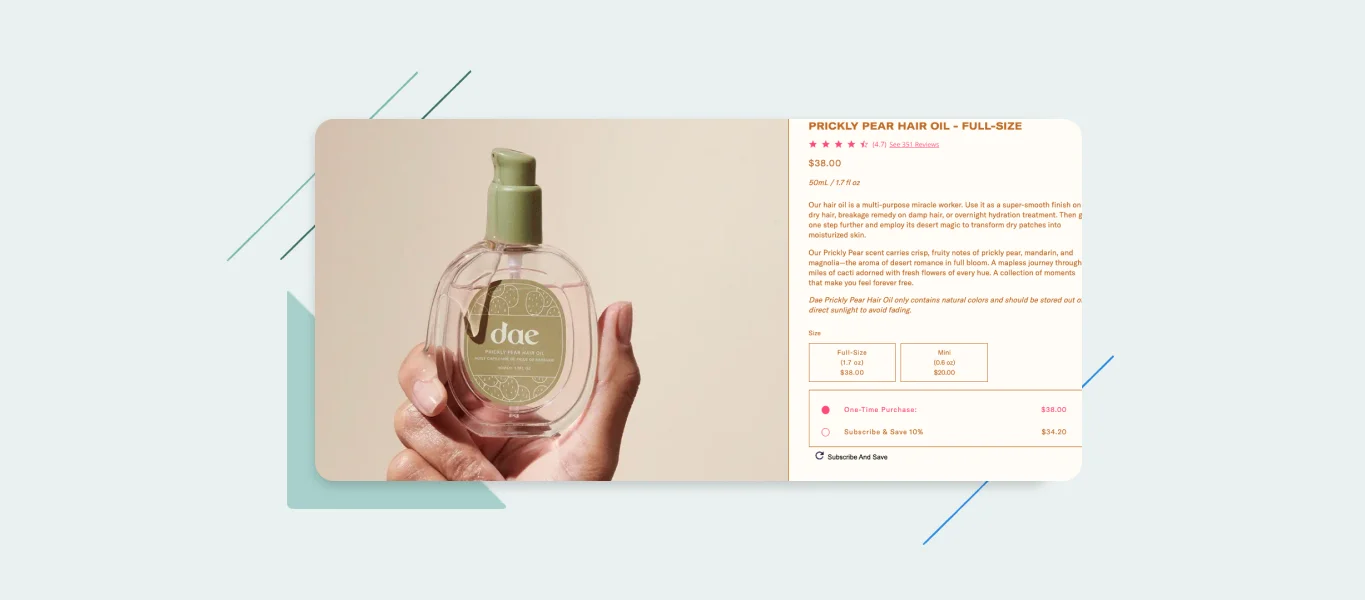Jimmy Wu, co-founder and CEO of Cat Person, says it all started with an observation in the pet store. As cat owners themselves, Jimmy and his co-founder, Lambert Wang, realized that cat products were extremely underrepresented on the shelves.
“If you ever walk into a pet store today,” Jimmy says, “or even go into an online pet store, it essentially feels like you’ve walked into a dog store.” The small percentage of cat products are generally found at the back of the store, and the selection is sparse. This causes a lot of cat parents to purchase products that are actually designed for small dogs, says Jimmy—despite the fact that cats have very different physical needs.
So, with this underrepresented customer in mind, Jimmy and Lambert set out to build a brand with products designed specifically for cats and their owners. Cat Person launched in March of 2020 with a broad lineup of essentials, including wet and dry food, treats, and physical goods like beds, bowls, and toys. And the company’s ultimate goal? To help foster the unique and special bonds that people, themselves included, have with their cats through these product offerings.
Recently, we got the chance to sit down with Jimmy and discuss Cat Person’s emphasis on the customer experience, from intentional product development to quizzes to a value-adding unboxing experience, and how these all tie in to the larger content marketing strategy that has helped Cat Person carve out success in a competitive ecommerce market.
Leveraging customer insights for intentional product design
Having a greater purpose from the getgo allowed Cat Person to develop thoughtful, intentional products specifically designed for the unique needs of their customer base. On first glance, the brand’s products immediately stand out from the competition in both their design and intentionality.
Take, for example, a cat bed, says Jimmy. Most of the time, cat beds are designed generically for a dog, not a cat, whose physical needs are much different. These products also aren’t designed for the pet owner, whose needs are equally important.
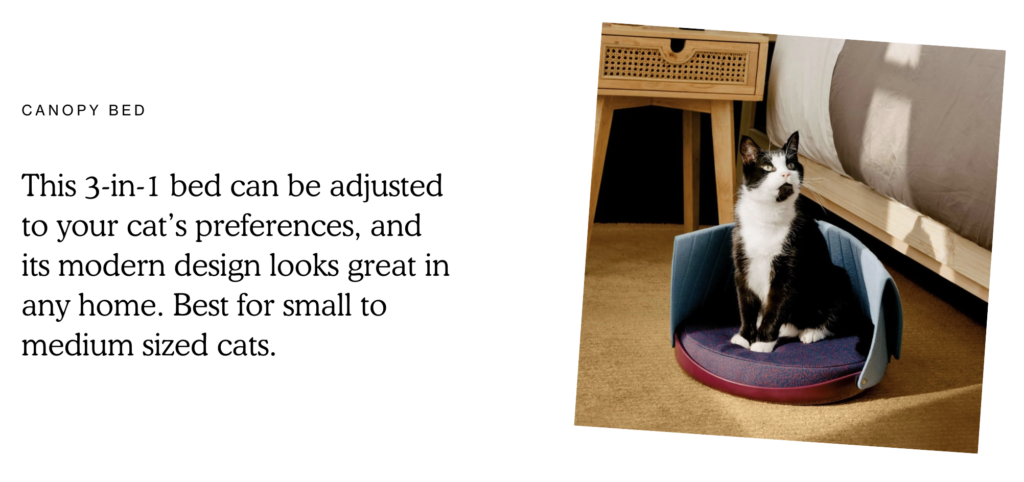
“If I’m a modern consumer with a modern decor at home,” says Jimmy, “I want something that not only my cat’s going to love, but I’m going to love and feel proud to have in my home.” With these needs in mind, Cat Person created a bed with an aesthetic design, adjustable canopy (which can be extended, folded down, or removed depending on whether the cat wants a hideaway or a more open feel), and washable cover.
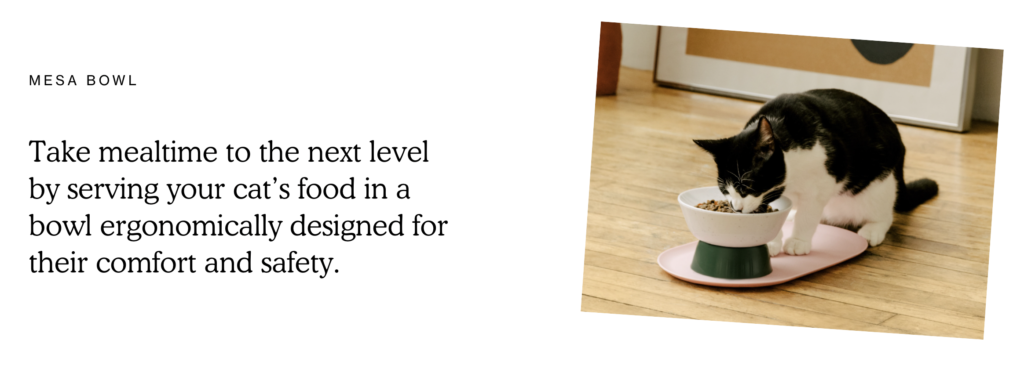
Another example of Cat Person’s differentiated product offerings is their cat bowl, which is elevated to help improve digestion and has a base to catch crumbs of extra food. It’s also dishwasher safe and comes in a variety of colors. Balancing the needs of both cats and their owners in this way helps foster new customers’ trust in the brand and encourages repeat business.
Building brand loyalty through personalization
Let’s back up for a second. It’s important to have quality products—but how does Cat Person guide its customers to purchase those products?
One strategy the brand uses is its meal plan onboarding quiz. For many ecommerce businesses, product recommendation quizzes are a great way to get to know your customers, make informed product suggestions, and showcase your unique brand identity before the customer opens their first box.
Cat Person’s quiz gathers information about the specific cat and their current feeding patterns to create a more customized meal plan that’s better-suited for that particular cat. Since cats are notoriously picky, this makes it especially important for them to find a food they like and want to stick with.
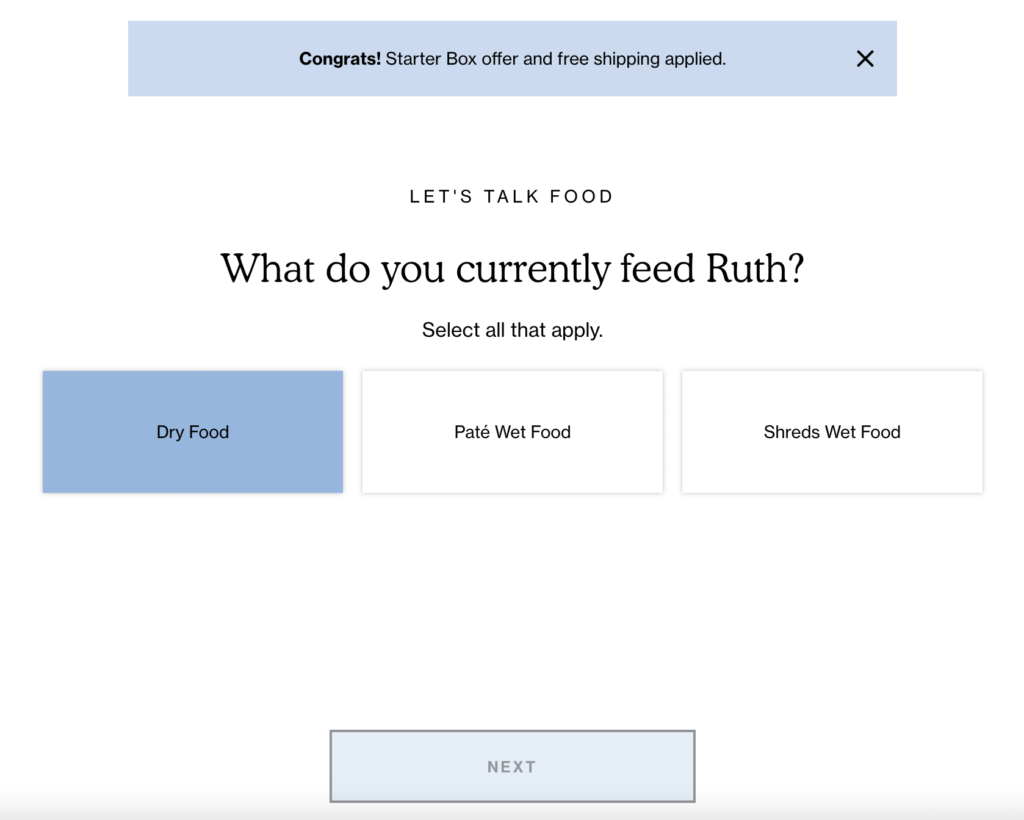
Cat Person’s quiz begins by asking for the cat’s name—the kind of attention to detail that reinforces their brand identity, as well as their goal to put both cats and their owners first. It also allows the brand to better customize and personalize their communication with their customers, helping build brand loyalty.
As Cat Person is primarily a subscription box business with its food meal plans, fostering that loyalty for ongoing customer relationships is critical for retention and driving higher LTV for the business.
Creating a memorable unboxing experience
“When you order your product and it shows up on your door, that unboxing experience is one that every single person is going to see.”
Jimmy Wu, Co-Founder & CEO of Cat Person
A key area in which Cat Person leverages its customer insights is through their memorable unboxing experience and custom packaging. Anyone who’s ordered from a direct-to-consumer ecommerce brand has dealt with the onslaught of shipping boxes and product packaging materials that accompany a delivery.
For many ecommerce brands, says Jimmy, these boxes tend to be somewhat of an afterthought to the online shopping experience. Cat Person, however, wanted to approach them differently, and saw them as an opportunity to tap into the insights that they knew about people in the category.
One such insight? Cats love boxes.
“You can go out and buy your cat a thousand dollar toy, and probably all they want to do is cram themselves into that box that it came delivered in,” says Jimmy. “The other thing that we knew is [for] a lot of customers, especially as ecommerce continues to grow, there’s a lot of concerns about sustainability. There is a lot of packaging involved in shipments and shipping products to people’s homes.”
Their practical solution was to give their branded boxes a second, upcycled purpose: Once you unbox your delivery, the box itself becomes some sort of toy for your cat. Different sizes of boxes have different purposes: One turns into a toy with a ball your cat can bat around; another, the “Cat Chalet,” turns into a mini house hour cat can hide in. An extra large box converts into what they call the “Cat Condo,” with “indoor” and “outdoor” spaces for your cat to play and rest.
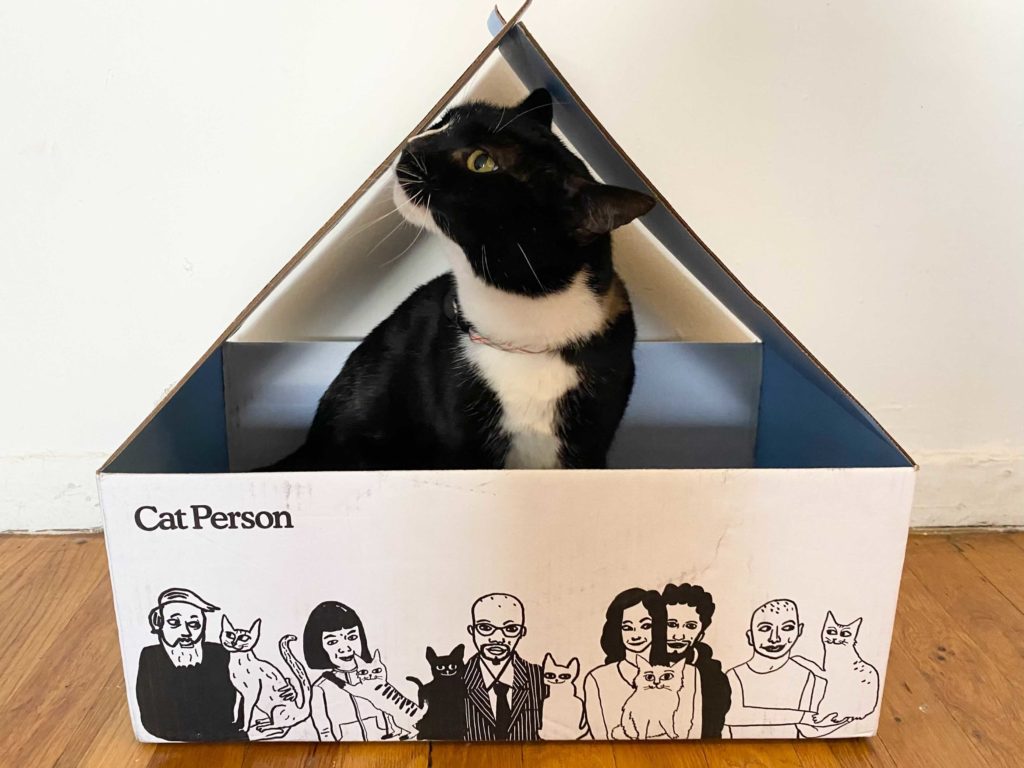
By taking something that’s typically purely functional, and using it to help elevate the experience, Cat Person’s unboxing experience offers a huge surprise and delight factor for customers. It creates a value-add at no additional cost to the customer, provides a way for the customer to directly interact with the brand, and shows that the brand understands cats, cat parents, and what it means to be a cat person.
“I know a lot of DTC companies put a lot of focus on unboxing experience, because it is incredibly important…. But I think it takes it to just a different level when you can actually get customers to interact with the unboxing experience. It’s not that you’re just trying to push information on them, but you’re actually creating a really, truly deep, deep experience for them.”
Jimmy Wu, Co-Founder & CEO of Cat Person
Building brand awareness with user-generated content
As it turned out, Cat Person’s memorable unboxing experiences didn’t just provide value for the customer—they also proved to be incredibly valuable digital marketing opportunities for the company. Why? As customers started to experience Cat Person’s unique branded packaging experience, they started creating user-generated content around it in the form of unboxing videos and social media posts showing cats playing with their custom boxes.
User-generated content is important for many brands—but it’s particularly valuable for Cat Person for several reasons. For one, “The internet is the dog park of the cat world,” says Jimmy. In other words, while dog parents will socialize with each other and their pets at the local dog park, there isn’t an equivalent physical public space where cat parents convene.
This, says Jimmy, is what makes social media so powerful for Cat Person’s customer base specifically. Social media is where cat owners show off their cats and talk to each other for recommendation and advice. Because of this, user-generated content serves as a particularly valuable opportunity for the company to build brand recognition and customer loyalty.
It also helps Cat Person showcase their audience in a way that goes beyond the online fad of funny cat memes, but through content that speaks to the meaningful relationships people have with their cats. There really is no one type of cat parent, says Jimmy, and the brand wants to speak to this through its content.
“Part of what we’re trying to do as a brand is really shine a light and showcase what it means to be a cat person—in particular, what it means to be a modern cat person. Which is, this is an incredibly diverse community of real people, of all different ages and genders, and professions in whatever dimension you want to name.”
Jimmy Wu, Co-Founder & CEO of Cat Person
Want to create a great unboxing experience for your customers?
Small businesses and larger ecommerce brands alike can reap the enormous benefits of a memorable unboxing experience. It can help foster a personal connection with your brand, make a great first impression for new customers, and encourage repeat purchases—all incredibly valuable for subscription box businesses.
To take your brand to the next level, consider the following strategies for elevating your unboxing experience:
Deliver branded packaging
Unboxing is often the first impression a customer has with your physical products. This makes your shipping boxes a crucial touchpoint for showcasing your branding.
Why? Branded packaging can help products feel more premium. It can boost your customers’ impression of your brand, showing the intention you’ve put into the entire purchasing experience, right down to the packing materials. And for online retailers, who don’t have the same tangible branding opportunities as brick-and-mortar stores, packaging is an especially important opportunity for creating a lasting impression of your brand.
Use eco-friendly and sustainable packaging materials
More and more, today’s consumers are interested in brands with environmentally friendly and sustainable practices. And when a customer receives an order from your company, what’s the first thing they notice? Your packaging.
As subscription ecommerce continues to skyrocket, many people are receiving more and more deliveries to their homes. That means packing materials accumulate, which can create a negative association with your brand if your materials don’t have a focus on sustainability.
Are your products fragile? Use sustainable alternatives to typical packing materials, like compostable packing peanuts. Sending perishable goods? Include an option to recycle your ice packs (with clear instructions on how to do so)—or provide ideas for how customers can get additional use out of them. And try to cut down on excess packaging, like extra bubble wrap or tissue paper, whenever your packaging needs allow it.
Getting creative with ways to recycle or reuse your packing materials will again highlight your brand’s intentionality and understanding of your customers’ values.
Offer a free sample
Including free samples in a delivery doesn’t just add value for your customers—it also adds value for your brand. Why? Free samples are a great opportunity for cross-selling, or marketing similar products to customers based on their purchase history. With a free sample, your customer can try a new product risk-free, increasing the likelihood of a future purchase. Over time, for your business, those add-on purchases add up, increasing not only AOV but also LTV.
Include printed materials
A thoughtful note can be meaningful whether it’s from a lifelong friend or a brand. Including a printed or handwritten thank-you note in the package can make your customers feel special, helping strengthen the personal connection with your brand.
Printed materials are also a valuable educational opportunity. Depending on your product offerings, your customers may benefit from instructional or other supplemental materials so people can maximize the benefits of your products. For example, Cat Person includes an insert explaining how to transition your cat onto new food. As this process can be tricky for some pets, providing guidance at the point of unboxing helps to manage customer expectations and ensure the most seamless possible transition for both cats and owners.
For your business, these educational materials can directly impact customer satisfaction and increase the likelihood of a repeat purchase.
Check out the full interview with Jimmy Wu, as well as conversations with other industry experts, on our Hit Subscribe podcast.
